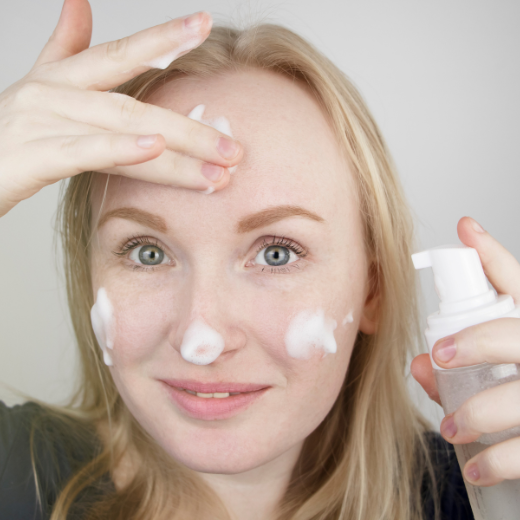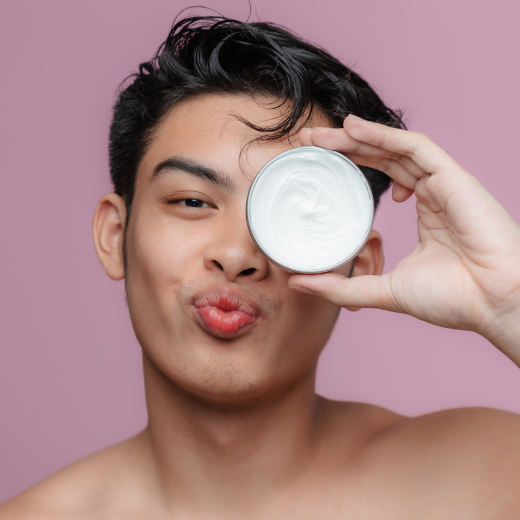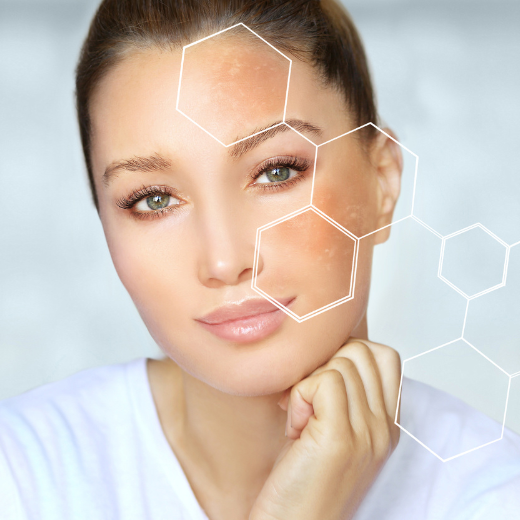Rosy Reds: Skin Care Tips for People with Rosacea
Posted by Nikki Wisher on Jul 18th 2023
Frustrated by frequent blushing and skin irritation? It happens to a lot of us – an estimated 14 million people in the US alone, in fact, have rosacea. If you have rosacea, your dermatologist should be your first resource for any advice or recommendations for your skin’s specific needs. To speak in generalities, though, there are skin care tips that are helpful for nearly everyone with rosacea as well as people who are prone to redness and irritation. Check out these tips to calm your skin.
Look for the Magic Word: Sensitive
As you’re shopping for skin care products, one of the best ways to know if a product will be safe for your skin is to look for the word “sensitive” or “for sensitive skin.” At its core, rosacea is a condition that makes you prone to inflammation when certain triggers appear, so if you have rosacea, you have sensitive skin. Products made for sensitive skin are less likely to spark a rosacea flare-up.
This doesn’t mean that everything that’s marketed for sensitive skin will be safe for your skin – only that it’s more likely to be safe. Everyone’s skin is different, so there isn’t a way to make blanket statements about what will and won’t irritate your skin.
Use Gentle Cleansing Techniques
This might surprise you, but cleansing should never irritate your skin. It often does for people with rosacea and sensitivity, but that typically means you’re using the wrong cleansing product or the wrong techniques.
First, be sure you’re using a gentle cleanser that’s hydrating and sensitive skin-friendly. Second, use only your fingertips to dampen your face, apply the cleanser, massage in the cleanser, and rinse off the cleanser – ditch the washcloth or other applicators. Next, use a clean towel to pat dry after cleansing and don’t rub your face dry. Finally, follow each cleansing with moisturizer (or other steps in your skin care routine followed by moisturizer).

Take Sun Protection Seriously
Everyone needs to protect their skin from the sun, but it’s particularly important for people with rosacea. Sun exposure is one of the top triggers for rosacea symptoms. Your best bet is to look for a sunscreenwith zinc oxide or titanium dioxide that is:
- Broad-spectrum
- SPF of 30 or higher
- Unscented or fragrance-free
It’s also a good idea to limit the time you spend in direct sunlight and to spend your outdoor time in the shade as much as possible. A wide-brimmed hat and large sunglasses also do a great job of reducing the sun on your face.

Keep an Off-Limits List
Everyone with rosacea has different triggers that will spark their rosacea symptoms, and the only way to know what those are for you is through observation and trial and error. That’s why it helps to keep a list.
First, have a list of ingredients that aren’t rosacea-friendly – ingredients which, when they’re in skin care products, are likely to irritate your skin. This includes:
- Alcohol
- Fragrances
- Glycolic acid
- Sodium lauryl sulphate (SLS)
- Camphor
- Lactic acid
- Menthol
- Urea
Second, make a list of products that have irritated your skin in the past and add to it whenever you find something new that’s incompatible with your skin. Keeping track of this helps you notice patterns and learn how to keep your skin cool as a cucumber.
Become Besties with Your Moisturizer
Other than sun protection, moisturizing should be a high priority for people with rosacea too. Moisture in your skin is essential for your skin’s natural protective barrier which blocks out irritants. The more fortified that barrier is with an effective moisturizer, the better your symptoms are likely to be.

Having Calming Products On-Hand
Much of managing rosacea comes down to discovering and avoiding your triggers. You could be the most vigilant skin care steward in the world, though, and from time to time, your triggers will be unavoidable or your skin will react to a new trigger you didn’t know about. It happens. Try to be prepared to minimize the inflammation when those outbreaks appear. Have soothing products at home, like redness reduction cream, products with green tea extract, or soothing face masks. You can even use ice packs to ease inflammation if cold isn’t a trigger for you.
Keeping Your Skin Happy with Rosacea
As you probably already know, rosacea is a chronic condition – it might ebb and flow over time but there’s nothing you can do to make it go away. The best you can do is to keep your symptoms to a minimum, and the tips above can help. Put these recommendations to use and see what a difference they can make in giving you clearer, calmer skin.

